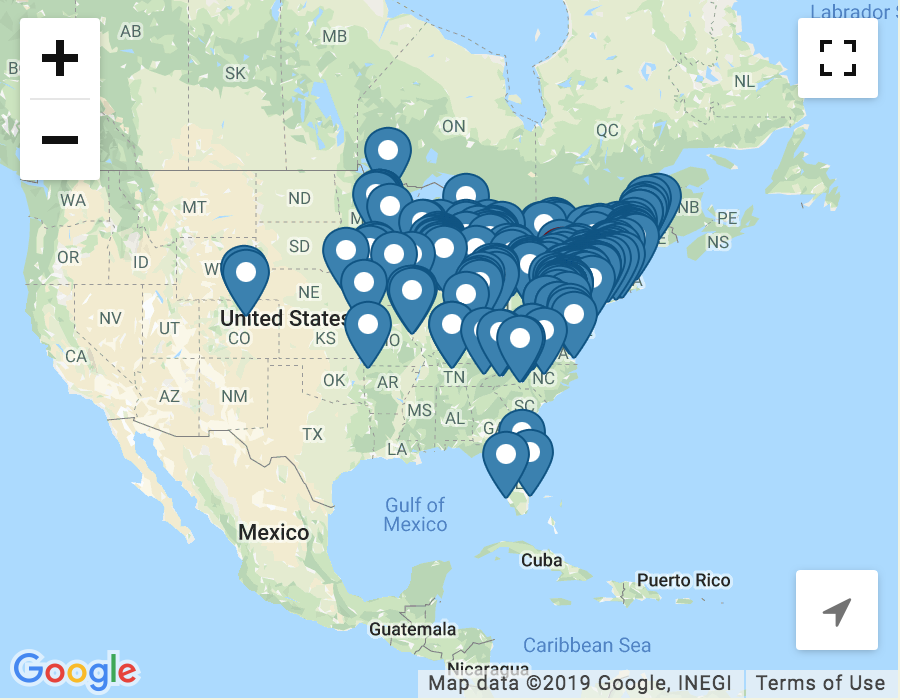Everyone loves the look of lush and lovely tropical plants. The larger-than-a-baby leaves, the unfurling greenery of jungle ferns and the vibrant, almost unreal flower colors are enough to make you feel you’re vacationing on a Caribbean island. When brought indoors, these tropical plants add height, soften corners and lend a sense of relaxation to a room’s otherwise rigid walls.
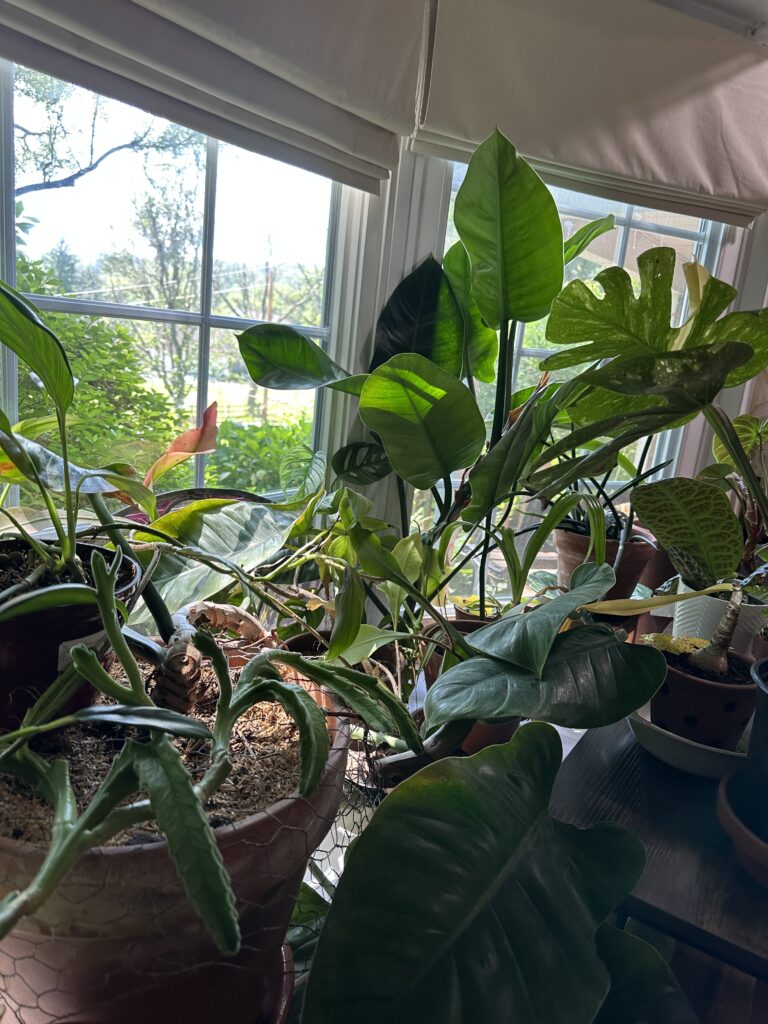
Looking to add some tropical inspiration to your interiors? We’ve gathered some pertinent information that covers the basics of tropical houseplant care.
What Makes a Plant “Tropical?”
Great question! Your initial answer might be “it’s all in the vibe.” In actuality, a tropical plant is one that comes from equatorial climates that experience consistent warmth and humidity. They have evolved to live in areas with high temperatures and lots of rain, which means they can also handle humidity. Many of the tropical plants used as houseplants have evolved in a tropical forest’s understory, which means they are well-adapted to a home’s low levels of light.
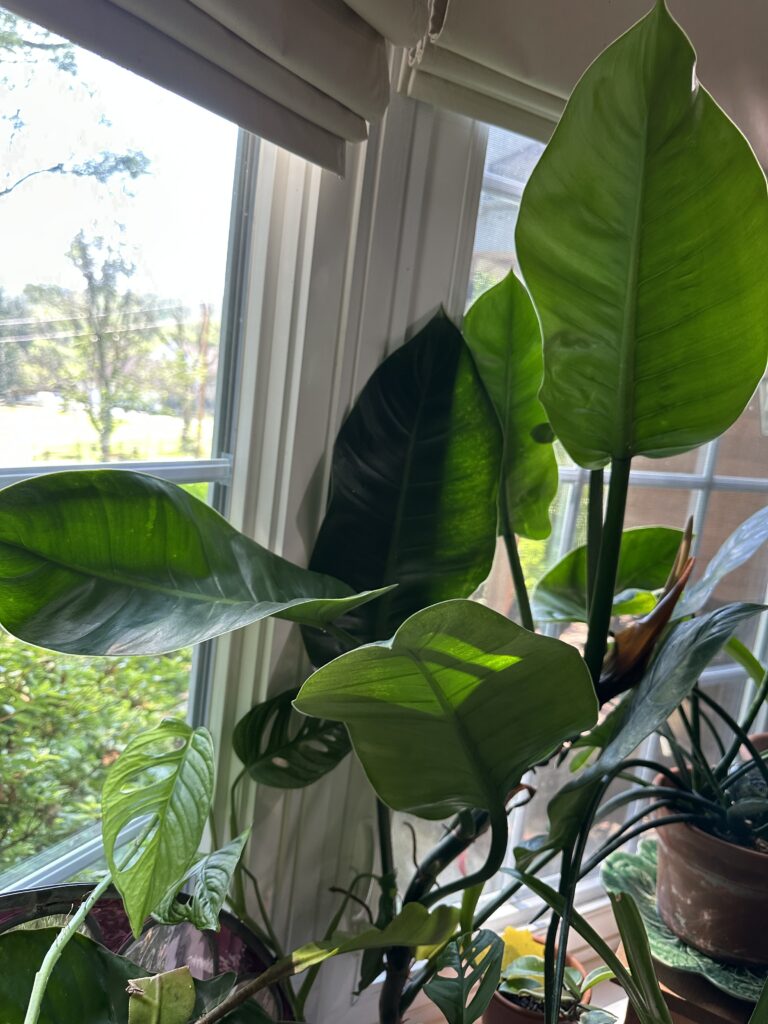
Apart from their climatic characteristics, tropical plants “look” a certain way, too. Large glossy leaves are one prominent feature. Large leaves help them create plenty of food and energy to fuel their fast growth. And the leaves’ glossiness from their waxy cuticle layer helps them retain some moisture during the ever-present humidity.
Why They Make Great Houseplants
A home’s interior environment presents one major limiting factor that is hard to get around for most plants—and that is a lack of bright, indirect sunlight. We already mentioned above that many tropical plants have evolved to thrive in the low light of a jungle’s interior. This makes tropicals a natural for indoors.
You may have heard about a study that says houseplants improve air quality. This study by NASA claims that certain tropical plants “purify” air by absorbing formaldehyde and benzene. While parts of this study don’t necessarily pertain to a home’s environment—it seems the study results may have gone through a game of “telephone”—tropical plants do release oxygen, which is a benefit to us humans.
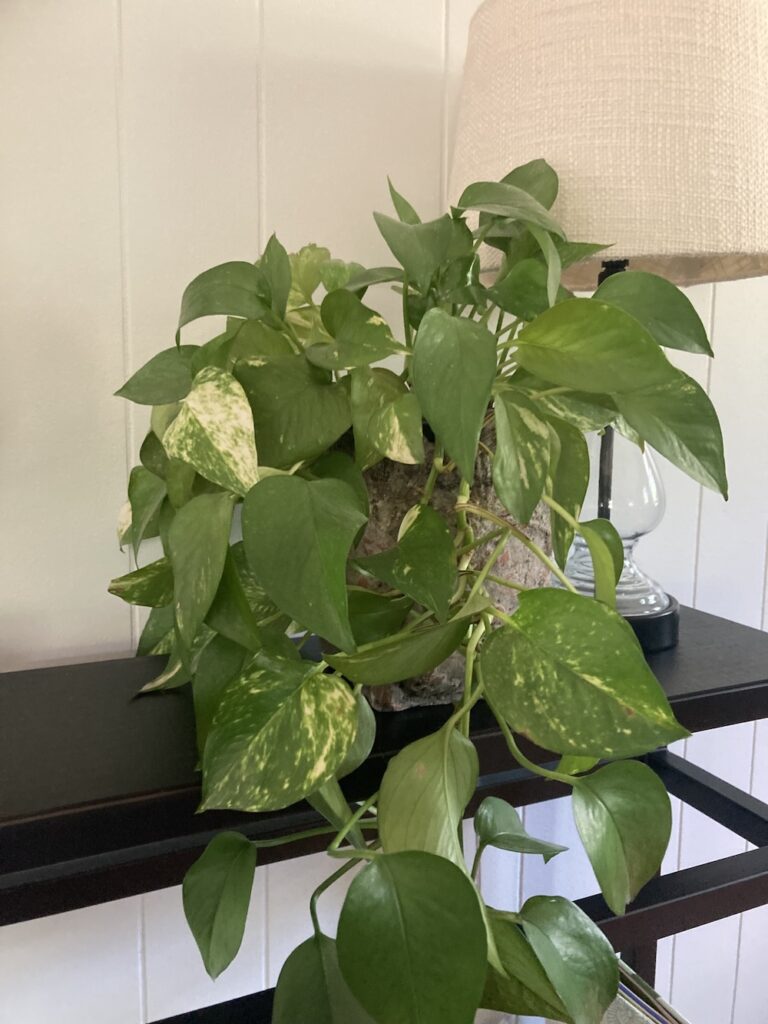
Another reason tropicals excel as houseplants is due to their low maintenance. While they do need some attention, they aren’t attention hogs. Check in with them once a week and they’ll be good on their own. Different plants have different requirements, of course, but once you learn what those are you can dial in and fine-tune your tropical houseplant care regimen.
Today’s Popular Houseplants
While there are countless tropical plants you can bring into your home, here are six of the most beloved houseplants, along with their general care and watering requirements.
Monstera deliciosa (Swiss Cheese Plant). Monstera is the iconic tropical plant known for its large, glossy leaves with natural holes or splits. It can grow quite large in the right conditions, making it an excellent statement piece for your home.
- Light: Bright, indirect light is ideal for monstera plants.
- Water: Water thoroughly when the top inch of soil feels dry. Keep an eye out for overwatering! It can lead to root rot.
- Humidity: These plants thrive in humidity but can adapt to normal indoor conditions. A room with a humidifier or near a bathroom works well.
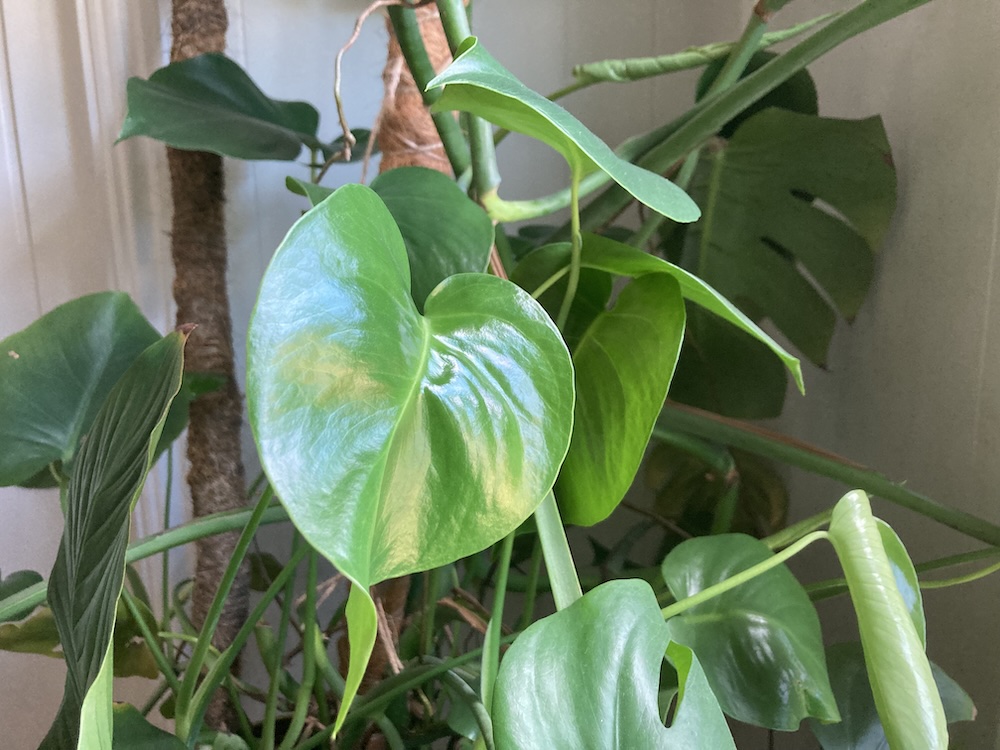
Philodendron. Philodendrons come in so many different variations, from the popular heartleaf philodendron to the larger, more dramatic varieties. They’re known for their trailing vines and their very easy care.
- Philodendrons come in so many different variations, from the popular heartleaf philodendron to the larger, more dramatic varieties. They’re known for their trailing vines and their very easy care.
- Light: Moderate to bright indirect light.
- Water: Avoid letting them sit in water, as they prefer to dry out between waterings. Let the top 1–2 inches of soil dry out before you add water.
- Humidity: Philodendrons love humidity but are adaptable. A regular misting can help them thrive.
Spathiphyllum (Peace Lily). Known for its long, dark-green leaves and elegant white flowers, the peace lily is one of the easiest tropical plants to care for, making it a great choice for beginners.
- Light: Low to bright indirect light. They can tolerate lower light conditions, but they bloom better with more light.
- Water: Keep the soil consistently moist but not soggy. Water when the soil feels dry to the touch.
- Humidity: Peace lilies enjoy higher humidity levels but can also adapt to normal indoor conditions.
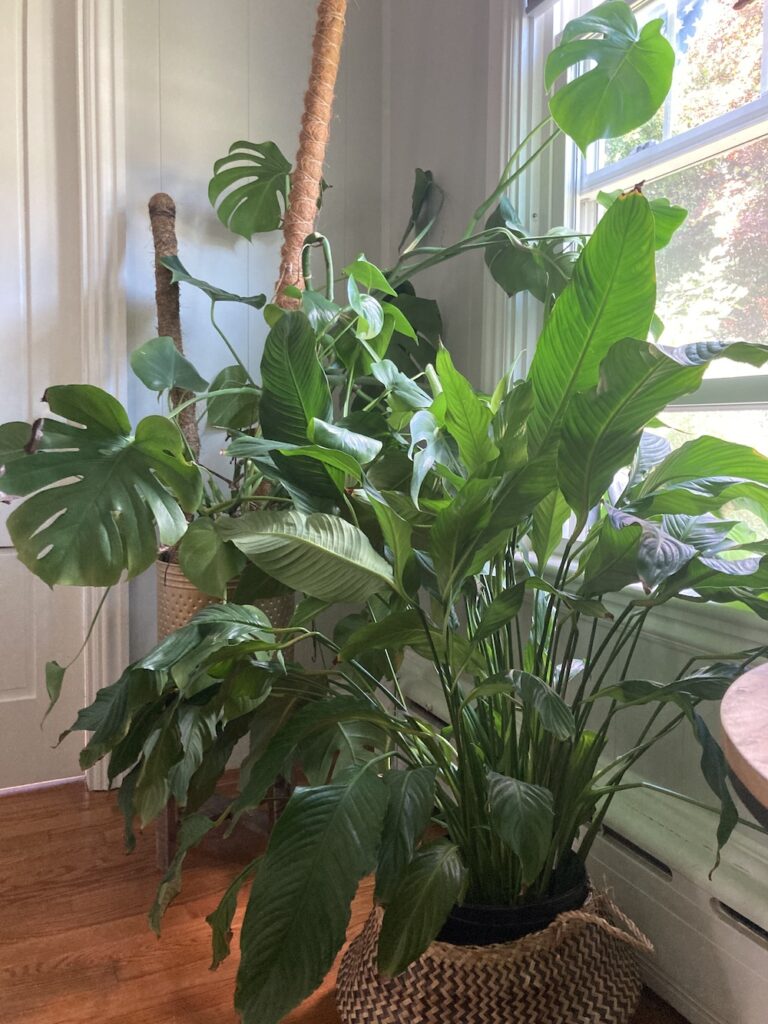
Bromeliads. Bromeliads come in an array of vibrant colors and textures, making them a true statement piece among tropical houseplants.
- Light: Give these bright, indirect light; too much direct sun can burn their leaves.
- Water: Water at the base and avoid watering the center to prevent rot.
- Humidity: These excel in high-humidity conditions.
Dypsis lutescens (Areca Palm). The areca palm, also known as the butterfly palm, is a popular choice for its feathery fronds and elegant appearance. It’s an instant tropical vibe anywhere you put it!
- Light: Bright, indirect light.
- Water: Allow the soil to dry out between waterings. Don’t let the palm sit in water.
- Humidity: Like most tropicals, the areca palm prefers higher humidity. It will thrive in a bathroom or near a humidifier.
Strelitzia reginae (Bird of Paradise). This tropical beauty has striking, bird-like flowers. It may seem like a delicate plant meant for fancy botanical garden conservatories, but it can flourish in your home with the right care.
- Light: Bright, indirect light or even some direct sunlight.
- Water: Keep the soil moist but not soggy. Water when the top 1–2 inches of soil are dry.
- Humidity: Birds of paradise love humidity, so try to keep the humidity high by placing it in a bathroom or using a humidifier.
Soils for Your Tropicals
You’ve chosen the tropicals that’ll live the lush life in your home. Ensure that they live a long happy life by seeing to their needs.
Maybe you’ve gotten a plant baby from a friend or need to repot one you purchased into a bigger container. You’ll need potting soil, and we have some recommendations for you.
Organic Mechanics Premium Blend Potting Soil: This is a rich, organic blend that is full of compost and worm castings. This makes it moisture retentive and the perfect potting soil for moisture-loving plants such as that beautiful bird of paradise.
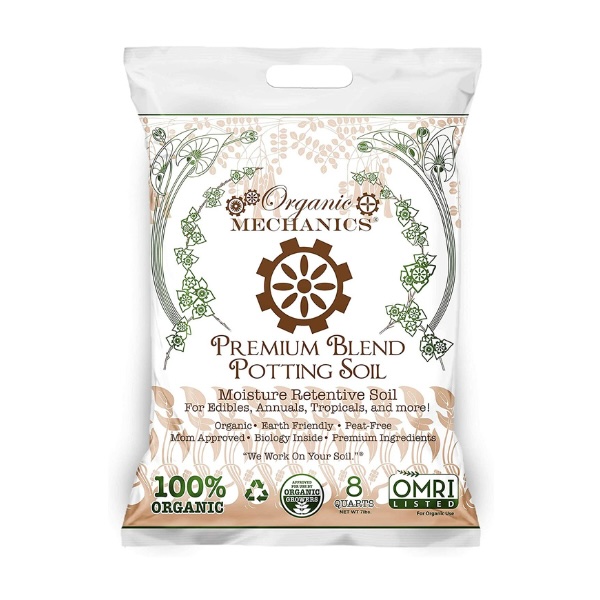
Organic Mechanics Container Blend Potting Soil: If you have a plant that likes its feet a little drier, this is the potting soil for you. The combination of compost, pine bark, coir, earthworm castings and rice hulls offers excellent drainage for your drier tropicals such as the monstera and philodendron. It’s also a good option for plants that spend a lot of their time in a darkish corner and wouldn’t use and transpire as much water, so would benefit from a drier blend.
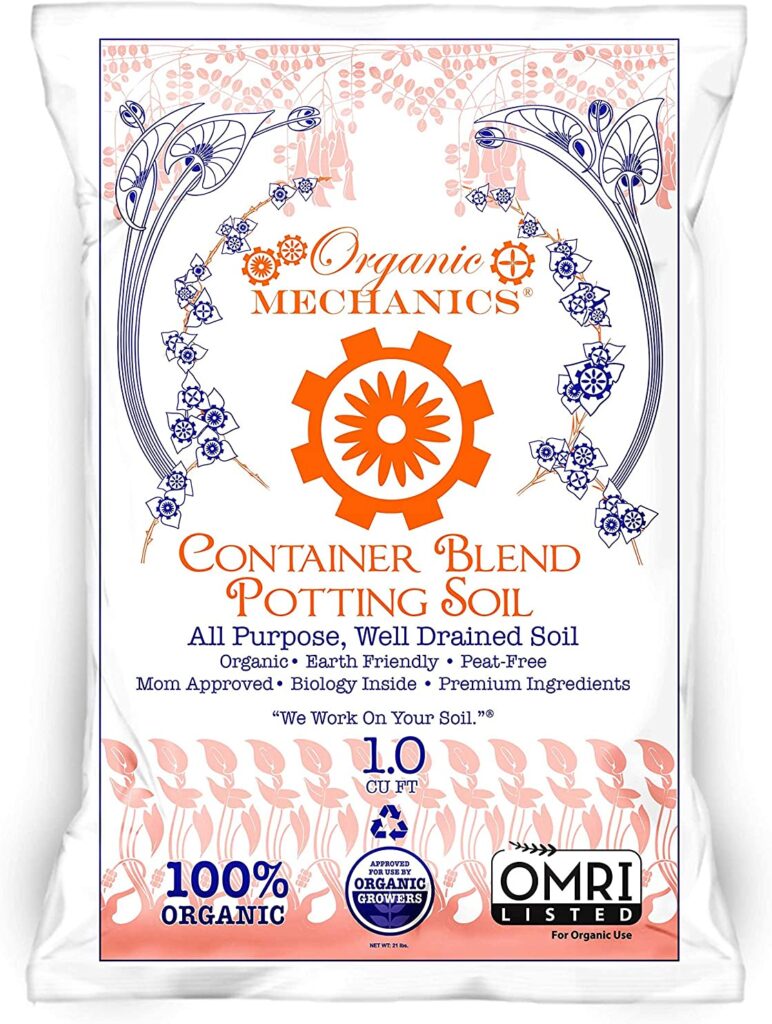
Why are we talking about houseplants during peak outdoor gardening season? Because summer is the best time to stock up on them—no cold weather that could injure them on their way home from the garden center in winter! Plus, they could spend a few weeks in the summery outdoors under the shade of a tree before you bring them inside. And it gives you time to plan your interior placement. As you spend more time inside when the weather gets colder, you’ll appreciate the summery vibes these indoor tropicals provide all winter long.




